|
| |
|
|
| |
|
|
| |
Container Gardening
Types of Containers
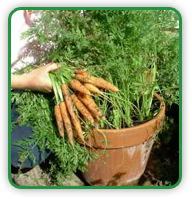 A wide variety of containers can be used to cultivate container gardens, including raised beds, window boxes, ceramic pots, old claw-foot bathtubs, and whatever else is easily available. Anything that has housed potentially harmful substances, such as old paint cans, should be avoided. Containers with open bottoms or holes in the bottom will allow for good drainage, but are not necessarily ideal as nutrients and minerals leached from the soil will drain out as well. If using a container with a sealed bottom, it is recommended to line the bottom with stones or something similar to allow for drainage and prevent the bottom of your container from becoming excessively A wide variety of containers can be used to cultivate container gardens, including raised beds, window boxes, ceramic pots, old claw-foot bathtubs, and whatever else is easily available. Anything that has housed potentially harmful substances, such as old paint cans, should be avoided. Containers with open bottoms or holes in the bottom will allow for good drainage, but are not necessarily ideal as nutrients and minerals leached from the soil will drain out as well. If using a container with a sealed bottom, it is recommended to line the bottom with stones or something similar to allow for drainage and prevent the bottom of your container from becoming excessively 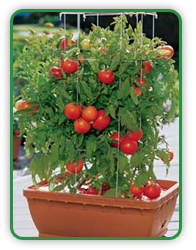 moist. moist.
Special Considerations for the Indoor Container Grower
Container gardening can be very productive for city dwellers or others with limited space or topsoil. Growing such gardens indoors is especially attractive to such people as these environments offer greater year-round stability of heat and humidity. Crops that require less time to grow, such as greens and microgreens, make the best choices for indoor cultivation. Other options to improve light conditions, including using shelves, supplementing with artificial lighting, moving container gardens to maximize light exposure, using reflectors, and constructing makeshift greenhouses can all be utilized to offset the potential challenges to indoor container gardening.
|
| |
|
|
|
| |
|
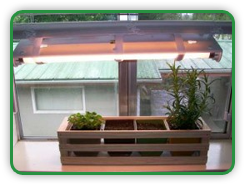 A wide array of herbs can be grown in containers on porches, patios, balconies and wherever else space and sunlight permit. Culinary herbs, in particular, make an attractive choice for such gardening. Many of these herbs are harvested for their leaves or aerial parts which can be harvest repeatedly throughout the growing season. Container garden is especially well-suited for culinary herbs as they can be grown in very close proximity to the kitchen. A wide array of herbs can be grown in containers on porches, patios, balconies and wherever else space and sunlight permit. Culinary herbs, in particular, make an attractive choice for such gardening. Many of these herbs are harvested for their leaves or aerial parts which can be harvest repeatedly throughout the growing season. Container garden is especially well-suited for culinary herbs as they can be grown in very close proximity to the kitchen.
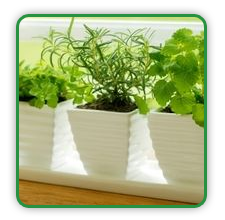 The list of culinary herbs that can be cultivated in containers is expansive and includes anise, basil, caraway, chives, cilantro, dill, fennel, mints, oregano, parsley, rosemary, sage, savory, tarragon, thyme and others. Though specific needs vary from herb to herb, most will do best with a fairly lightweight, well-drained medium that is rich in organic matter. An organic potting medium purchased from a trusted yard and garden store typically makes a good starting point, and can be amended with compost, pearlite, and other natural amendments as needed. Container herbs can also benefit greatly from the use of a self-watering planter, which ensures that water is delivered in a steady manner that is ideal for growing plants. The list of culinary herbs that can be cultivated in containers is expansive and includes anise, basil, caraway, chives, cilantro, dill, fennel, mints, oregano, parsley, rosemary, sage, savory, tarragon, thyme and others. Though specific needs vary from herb to herb, most will do best with a fairly lightweight, well-drained medium that is rich in organic matter. An organic potting medium purchased from a trusted yard and garden store typically makes a good starting point, and can be amended with compost, pearlite, and other natural amendments as needed. Container herbs can also benefit greatly from the use of a self-watering planter, which ensures that water is delivered in a steady manner that is ideal for growing plants.
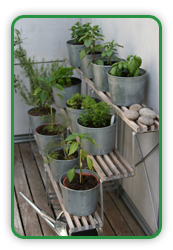 Growing medicinal herbs in containers typically requires considerably more care than most culinary herbs. Many medicinal herbs are large, and often require additional space to grow upward, outward, or down deep into the soil. Herbs harvested for their large root structure sometimes require multiple years of growth and considerable soil depth. A few medicinal herbs that can be grown in containers include aloe, holy basil, wood betony, calendula, catnip, chammomile, comfrey, feverfew, lavender, lemon balm, valerian, violet and yarrow. Growing medicinal herbs in containers typically requires considerably more care than most culinary herbs. Many medicinal herbs are large, and often require additional space to grow upward, outward, or down deep into the soil. Herbs harvested for their large root structure sometimes require multiple years of growth and considerable soil depth. A few medicinal herbs that can be grown in containers include aloe, holy basil, wood betony, calendula, catnip, chammomile, comfrey, feverfew, lavender, lemon balm, valerian, violet and yarrow.
|